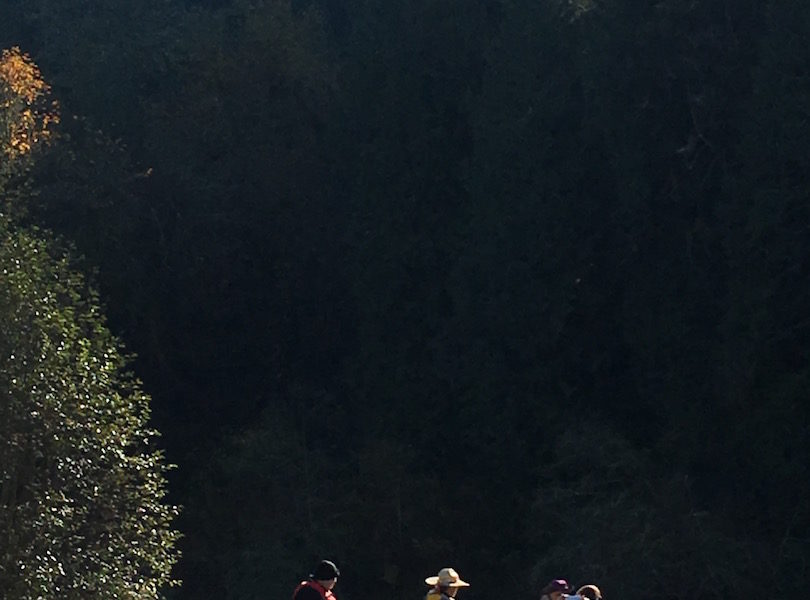Multiple waters trails exist in Washington State and across the nation, but the concept of such a trail isn’t necessarily well known. We hope the following information can answer some of your most burning questions about the Nisqually River Water Trail!
What is a water trail?
A water trail is a section of river (or saltwater) that offer non-motorized boaters (rafts, canoes, rowboats, and kayaks) the opportunity to travel a marked route by providing access areas, environmental and historical points of interests, signage, and picnic stops. They educate on the environment, history, and culture of the area and promote resource stewardship.
Is a water trail like a hiking trail?
Kind of. A water trail has places to launch just like a hiking trail does. Water trail launch points often have parking lots, restrooms, and information signs just like hiking trailheads have. However the river itself serves as the trail and there is no land based trail along the river. In the case of the Nisqually River Water Trail, it is geared towards non-motorized water craft like canoes, kayaks or rafts.
What are the benefits of a water trail?
Water trails connect various access points to the same body of water, helping to tell the story of the river or saltwater from start to finish. Signs, maps, guides, and other resources developed as a part of a water trail increase the amount of safety information available for users of all skill ability. Often, water trails have an associated volunteer group that will host clean ups and other stewardship events.
Where are some examples of established water trails?
The Willapa Bay Trail (river and bay), the Kitsap Peninsula Water Trail (on Puget Sound), and the Cascadia Marine Trail (Puget Sound and San Juans) are all examples of water trails. The Washington Water Trails Association has more information on all of these.
What’s the difference between a river without a water trail and river with a water trail?
It’s the same river. The only difference is that a water trail connects the various access sites along the river that are often owned and managed by various entities. A water trail creates an opportunity to connect these sites with logo, similar signage, map/guide, and website. It also provides opportunities to share safety information and tell the natural and cultural stories of the river.
Why is a water trail proposed for the Nisqually River?
The Nisqually River is a unique gem in the western Washington landscape in its largely undeveloped shoreline and the ability to raft for hours without seeing another person. Thanks to many dedicated individuals and organizations — including the Nisqually Indian Tribe — the Nisqually River allows for a stunningly scenic float. Although this river doesn’t offer as much whitewater as other rivers, it has ample wildlife viewing opportunities, a rich cultural history, and a feeling of solitude.
Connecting to nature, especially on or near the Nisqually River, is highly valued by many people. Hikers, rafters, photographers and others enjoy the chance to experience a wild river that is protected, unspoiled and natural. Developing a water trail is an opportunity to link these experiences, and to examine opportunities to add new access areas in a way that is compatible with natural and cultural resources. An established water trail is also a way to promote better stewardship of the river. Other examples of water trails have active volunteer groups that conduct regular trash clean-up events. We believe that a water trail is the best way to responsibly increase recreation on the Nisqually River, while protecting fragile cultural and natural resources at the same time.
Who is the Nisqually River Council? Why did they lead the effort to create a water trail?
The Nisqually River Council (NRC) is an education and advocacy organization that was formed in 1987. It promotes social, environmental, and economic sustainability in the Nisqually Watershed through programs such as youth and adult education, low impact development, the Nisqually Watershed Festival, ecosystem services and more. The NRC is guided by the Nisqually Watershed Stewardship Plan, which has 11 indicators for a truly sustainable watershed. As a component of that plan, NRC members strive to create high quality recreation opportunities for all ages and abilities. Although the watershed has multiple land-based recreation opportunities, the number of public river access points is very limited. The Nisqually River Water Trail Concept Plan & Recommendations works to responsibly increase river access.
Do you have additional questions? Contact the Nisqually River Council Program Coordinator at info@nisquallyriver.org or call 360.438.8715.
